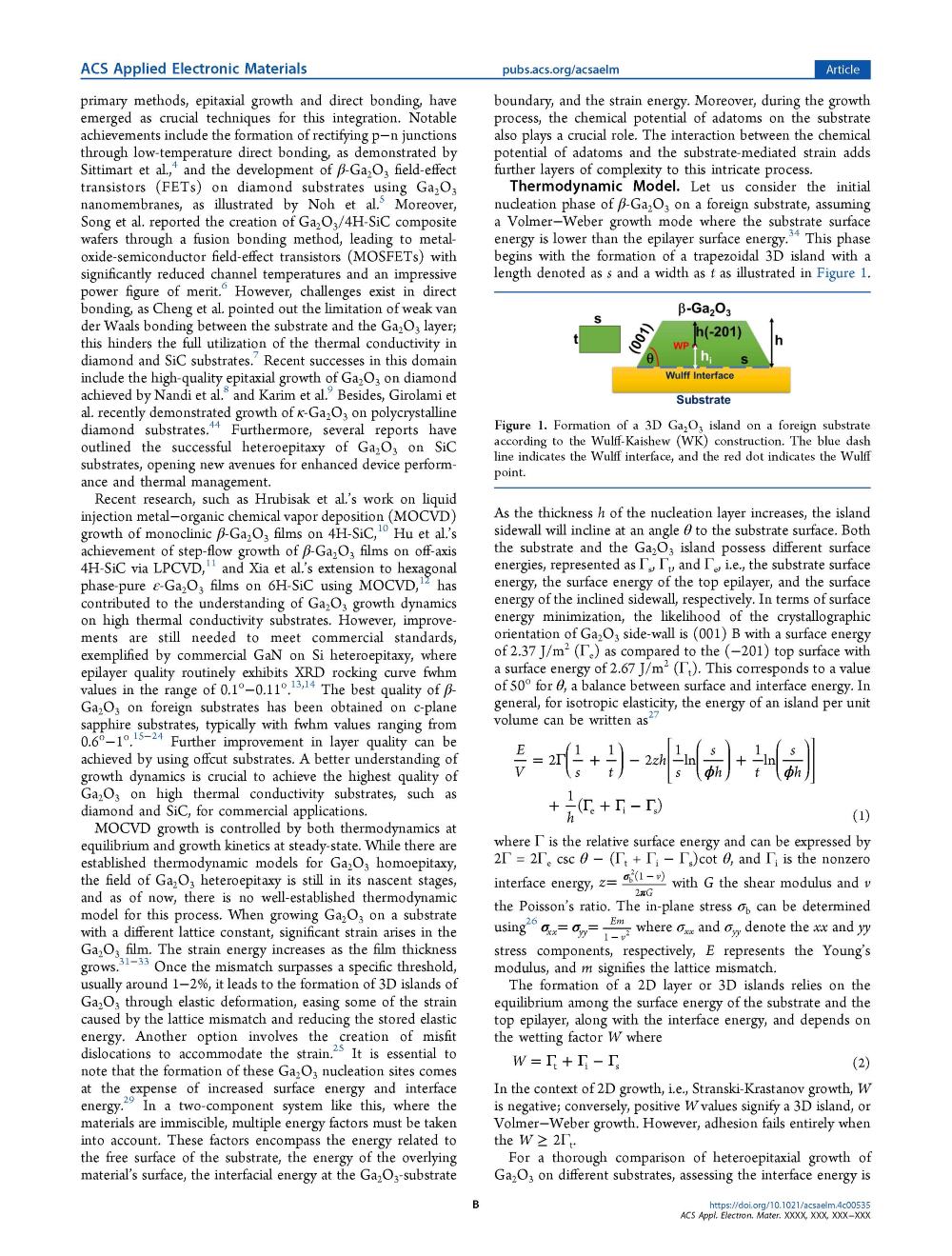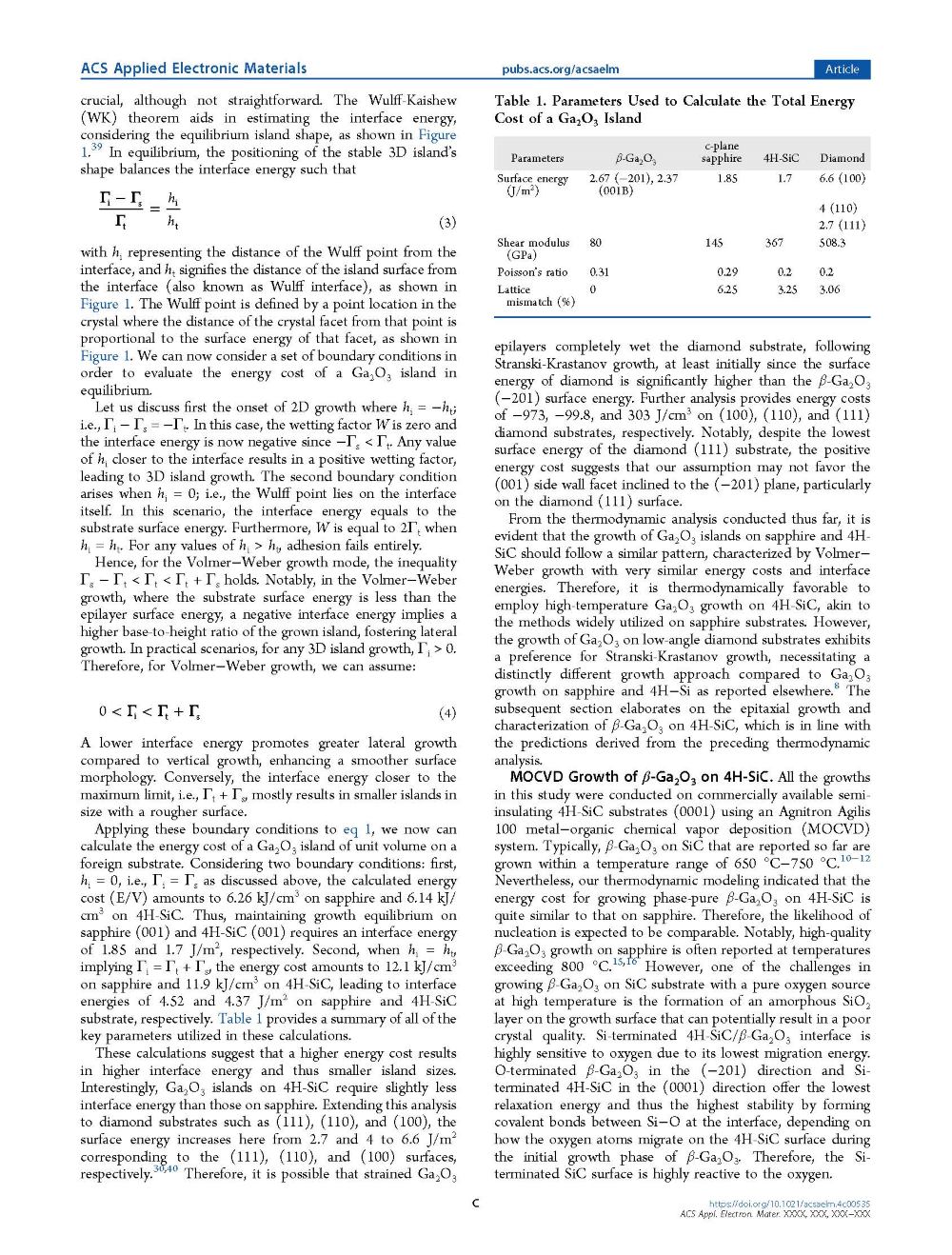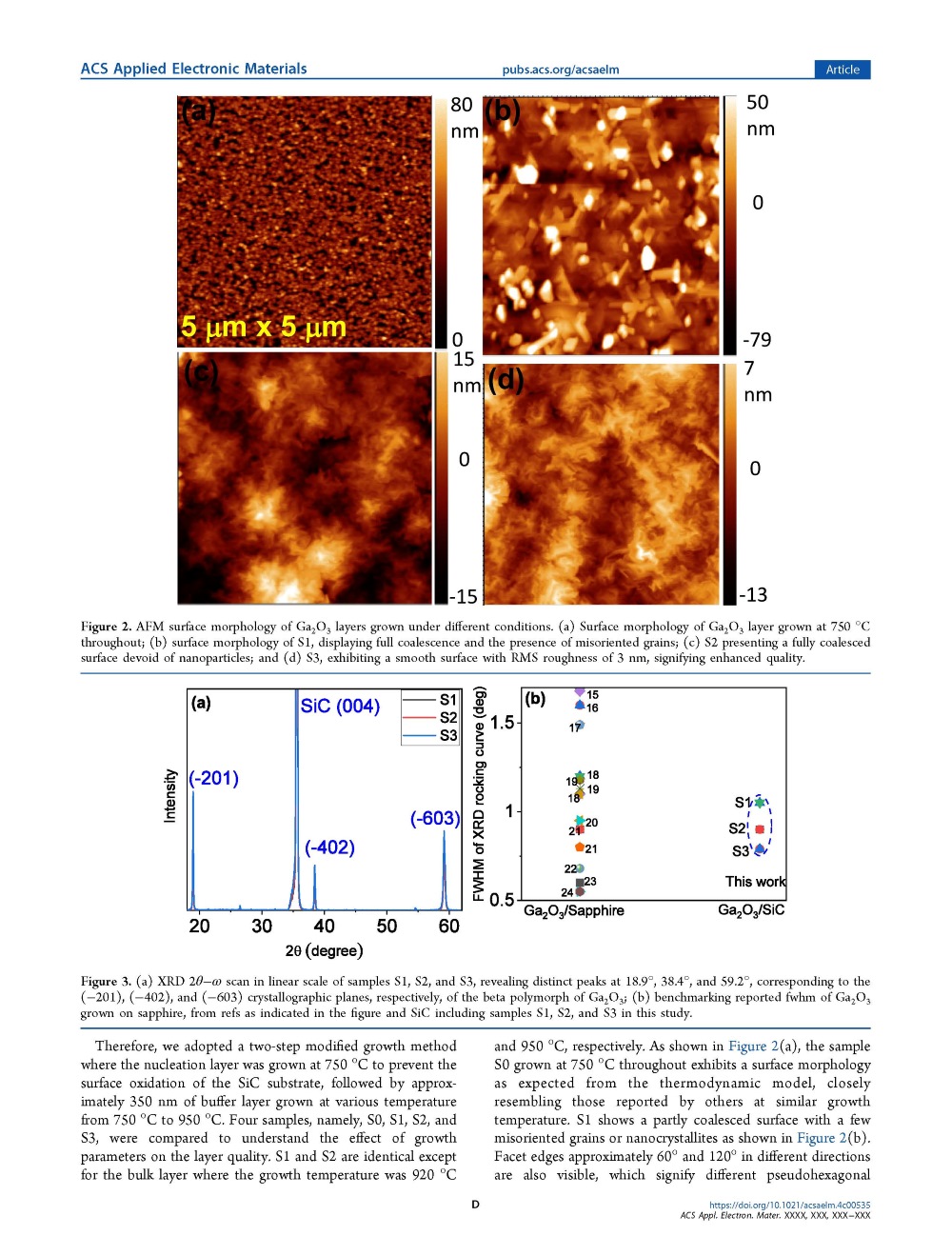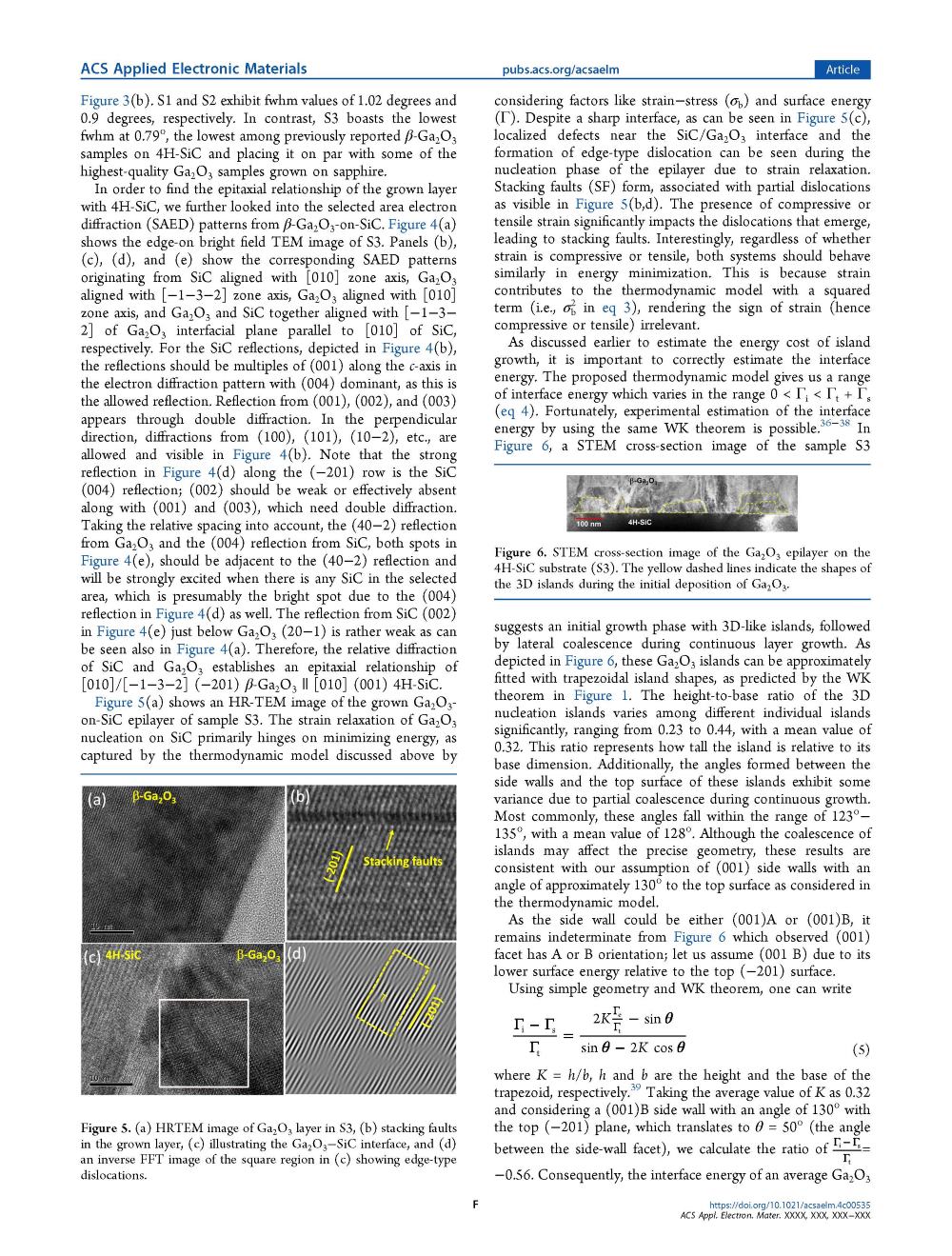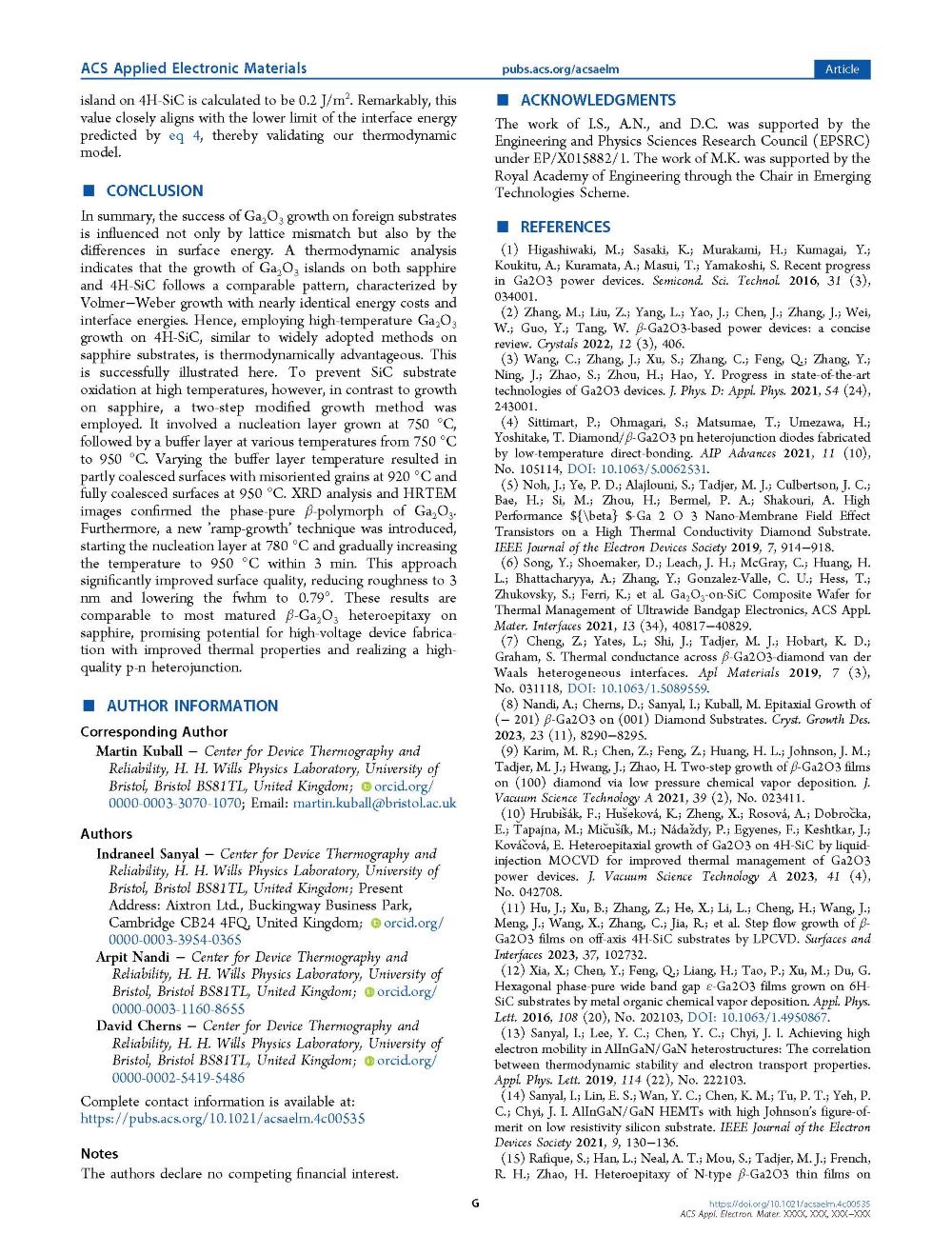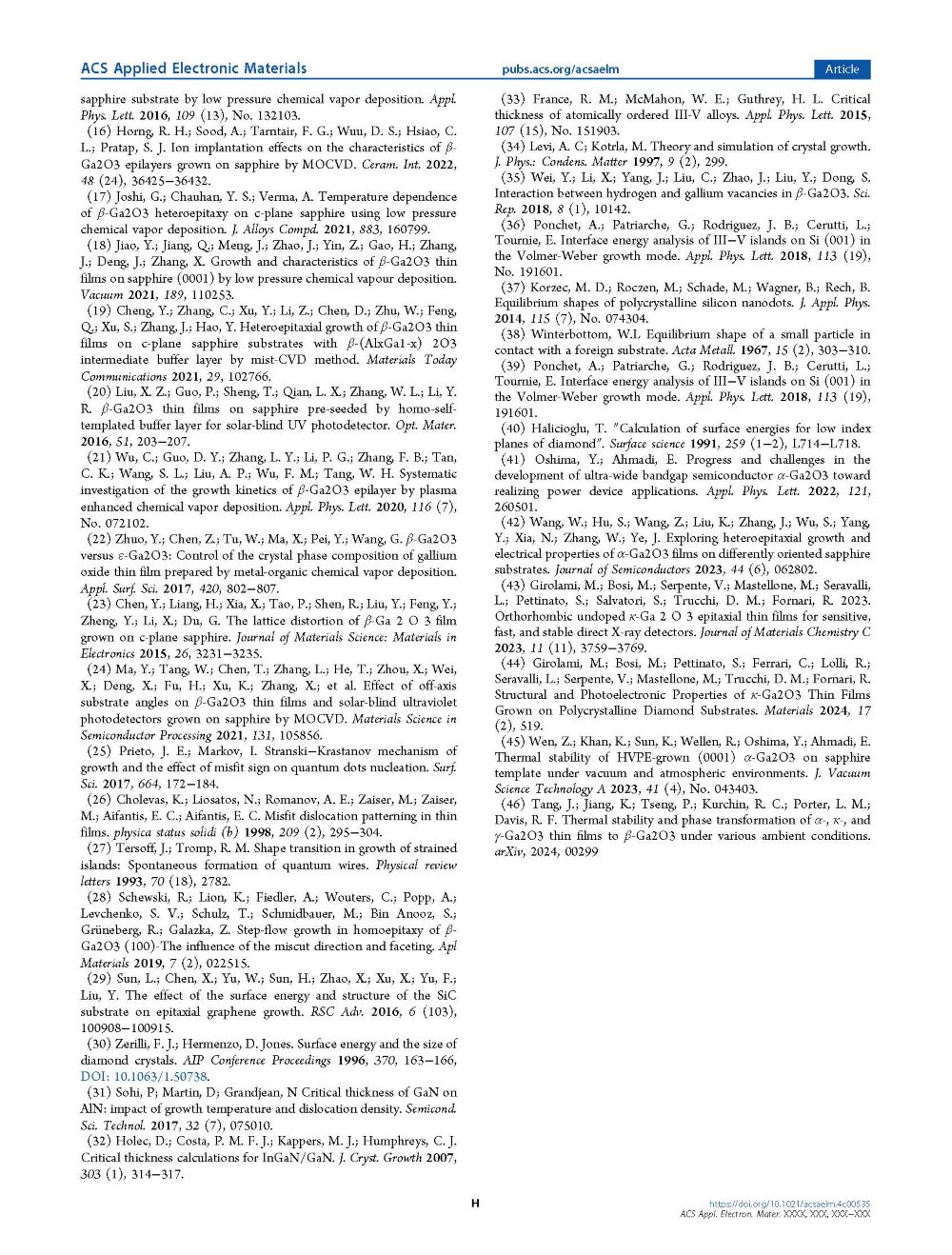
【International Papers】Thermodynamics of Ga₂O₃ Heteroepitaxy and Material Growth Via Metal Organic Chemical Vapor Deposition
日期:2024-09-27阅读:500
Researchers from the University of Bristol have published a dissertation titled "Thermodynamics of Ga₂O₃ Heteroepitaxy and Material Growth Via Metal Organic Chemical Vapor Deposition " in ACS Applied Electronic Materials.
Abstract
Heteroepitaxy of gallium oxide (Ga2O3) is gaining popularity to address the absence of p-type doping, limited thermal conductivity of Ga2O3 epilayers, and toward realizing high-quality p-n heterojunction. During the growth of β-Ga2O3 on 4H-SiC (0001) substrates using metal–organic chemical vapor deposition, we observed formation of incomplete, misoriented particles when the layer was grown at a temperature between 650 °C and 750 °C. We propose a thermodynamic model for Ga2O3 heteroepitaxy on foreign substrates which shows that the energy cost of growing β-Ga2O3 on 4H-SiC is slightly lower as compared to sapphire substrates, suggesting similar high-temperature growth as sapphire, typically in the range of 850 °C–950 °C, that can be used for the growth of β-Ga2O3 on SiC. A two-step modified growth method was developed where the nucleation layer was grown at 750 °C followed by a buffer layer grown at various temperatures from 920 °C to 950 °C. 2θ–ω scan of X-ray diffraction (XRD) and transmission electron microscope images confirm the β-polymorph of Ga2O3 with dominant peaks in the (−201) direction. The buffer layer grown at 950 °C using a “ramp-growth” technique exhibits root-mean-square surface roughness of 3 nm and full width of half maxima of XRD rocking curve as low as 0.79°, comparable to the most mature β-Ga2O3 heteroepitaxy on sapphire, as predicted by the thermodynamic model. Finally, the interface energy of an average Ga2O3 island grown on 4H-SiC is calculated to be 0.2 J/m2 from the cross-section scanning transmission electron microscope image, following the Wulff-Kaishew theorem of the equilibrium island shape.
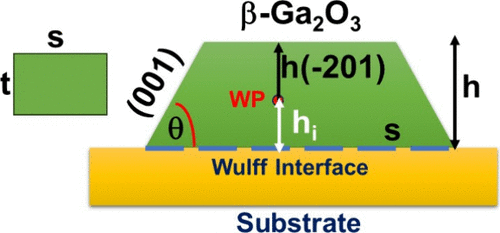
Figure 1. Formation of a 3D Ga₂O₃ island on a foreign substrate according to the Wulff-Kaishew (WK) construction. The blue dash line indicates the Wulff interface, and the red dot indicates the Wulff point.
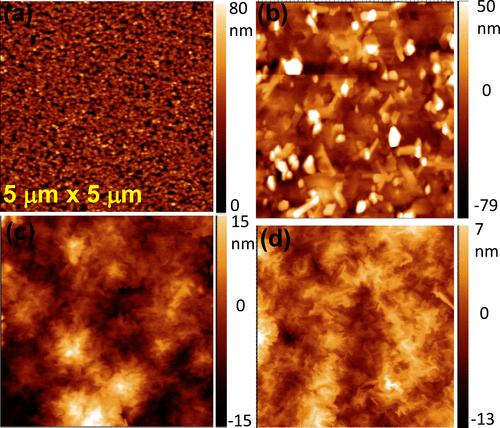
Figure 2. AFM surface morphology of Ga₂O₃ layers grown under different conditions. (a) Surface morphology of Ga₂O₃ layer grown at 750 °C throughout; (b) surface morphology of S1, displaying full coalescence and the presence of misoriented grains; (c) S2 presenting a fully coalesced surface devoid of nanoparticles; and (d) S3, exhibiting a smooth surface with RMS roughness of 3 nm, signifying enhanced quality.
DOI:doi.org/10.1021/acsaelm.4c00535

